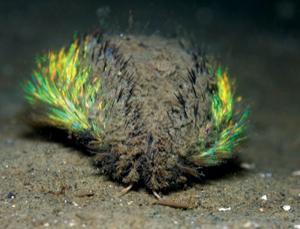
THE shimmering sea mouse, Aphrodita aculeata, may hold a key to creating nanoscale electronics, making it possible to produce nanowires 100 times longer than existing methods allow – and for a fraction of the price.
The sea mouse is a marine worm the length of your thumb and is native to the North Atlantic and Mediterranean. Florian Mumm and Pawel Sikorski at the Norwegian University of Science and Technology in Trondheim wondered if the hollow channels struck through each of its setae – the reflective spines which lend the sea mouse its iridescence – might also be useful as a mould for making nanowires.
Conventional nanowires are expensive to fabricate, requiring specialised facilities. In their more straightforward approach, the pair plucked setae from dead sea mice, put a charged gold electrode at one end and fired copper or nickel ions into the hollow channels from the other end. These were attracted to the charge plate, filling up the tube and growing into nanowires (Bioinspiration and Biomimetics, DOI: 10.1088/1748-3182/5/2/026005). “Nanowires are at most 0.2 millimetres long, usually. Ours can be grown up to 2 centimetres long,” says Mumm.
With a host of applications for nanowires emerging – from in-vitro health sensors to radical computer processors – new ways to make such wires should be welcome.






ニューバランス レディース スニーカー